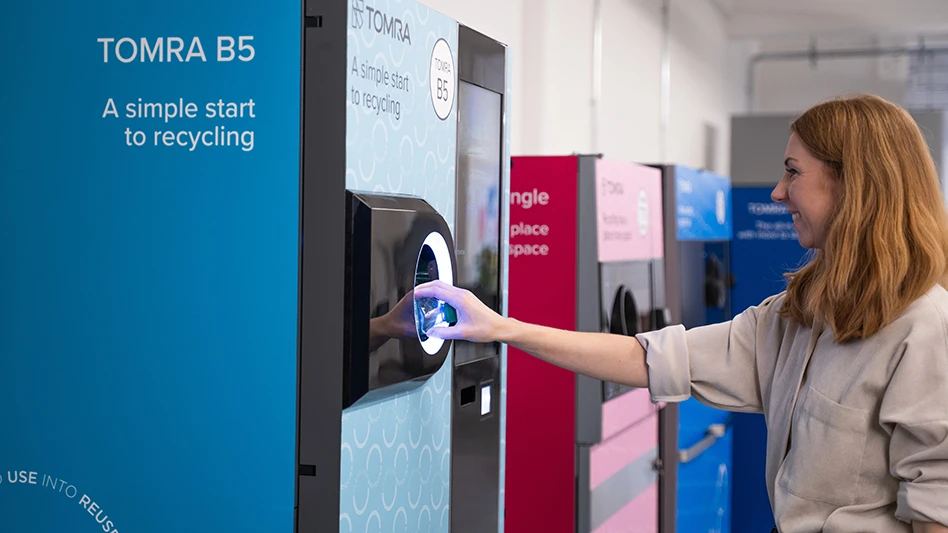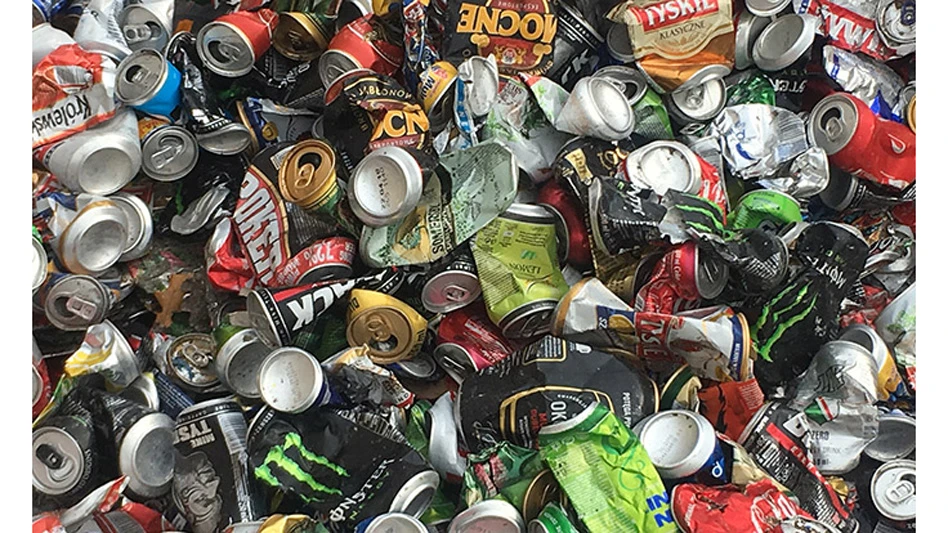
Swapan | stock.adobe.com
A study released by London-based Systemiq claims that Europe could reach a tipping point for textile recycling where recycling polyester through depolymerization becomes more competitive than producing virgin polyester.
According to Systemiq, depolymerization output could grow nearly tenfold by 2035 if policymakers and brands invest in infrastructure and long-term demand. Depolymerization is a chemical recycling process that the company says is suited to handling the growing volumes of postconsumer polyester textile waste when reuse and mechanical recycling are unviable
The report, “The Textile Recycling Breakthrough: Why policy must lead the scale-up of polyester recycling in Europe,” offers the first quantification of the cost gap between textile-to-textile recycled and virgin polyester and presents interventions to close it. It identifies ten aspects that could expand depolymerization, including extended producer responsibility (EPR) programs, standardizing and automating waste sorting processes, recycled content mandates and long-term brand offtake agreements.
RELATED: Study outlines plan to transition US plastic packaging, textiles to circular systems by 2040
“Europe can drive and achieve a textile recycling breakthrough,” says Sophie Herrmann, partner at Systemiq. “But without leadership from policymakers, the system will remain stuck in pilot mode as the business case does not work. We have the technology to recycle polyester back into textiles. Investors are watching the space. Now we need the enabling conditions to take these solutions to scale. If we get this right, Europe can lead on creating a competitive, circular textile industry—contributing to economic resilience, job growth and GHG [greenhouse gas] emission reductions.”
The European textile recycling landscape
Each year, more than 125 million metric tons of raw materials are consumed by the global textiles industry, yet less than 1 percent of fibers are made from recycled textiles, according to Systemiq. Unwanted clothing is frequently landfilled, incinerated or exported—often to countries lacking the infrastructure to manage it responsibly. Meanwhile, Systemiq says Europe’s own collection and sorting systems are increasingly financially strained.
The study focuses on depolymerization, a set of chemical recycling technologies that break polyester down into its original monomers, which Systemiq says can be used to create virgin-quality polyester. It can process most blended, colored or degraded garments, is reportedly close to commercial maturity in Europe and offers a lower-emission alternative to virgin polyester production. Despite this, producing recycled polyester from postconsumer textiles in Europe is estimated to be around 2.6 times more expensive than virgin polyester from Asia. Systemiq says this is due to underdeveloped collection and sorting infrastructure, high energy and capital costs, lack of consistent brand demand and missing externality pricing.
Aligning policy, demand and investment
To overcome these barriers of affordability and accessibility, the report outlines four key intervention areas:
- improving access to textile waste feedstock for depolymerization by redesigning products for recyclability, increasing separate collection, standardizing feedstock specifications and clarifying end-of-waste and trade rules;
- strengthening offtake demand for recycled materials through demand-side policy incentives such as recycled content targets under the Ecodesign for Sustainable Products Regulation (ESPR) and long-term brand commitments;
- reducing the production costs for recycling polyester by lowering electricity prices and derisking capital investment; and
- closing the remaining cost gap through EPR funding and modest green premiums.
The report proposes an EPR fee in the direction of 250–330 euros per metric ton, which it says could bridge more than half of the cost gap in a scaled system and cover the net costs of collection, sorting and recycling. A 5 percent brand-level green premium could cover shipping costs to Asian supply chains and close the remaining gap.
According to Systemiq, the production of recycled polyester from postconsumer textiles could compete with virgin polyester production if investments are made in the intervention areas.
Europe’s depolymerization output from textiles could grow from approximately 30,000 to approximately 300,000 metric tons per year by 2035. This could unlock significant emission savings and cut textile waste pollution.
The Textile Recycling Breakthrough report was prepared by Systemiq, with funding from Arc’teryx, Eastman, Interzero, Textile Exchange and Tomra and guided by an independently chaired steering group.
“Europe has the opportunity to lead the transition to circular textiles, and technologies like depolymerization are ready to play a central role,” says Eric Dehouck, managing director at Eastman Circular Solutions France. “What’s needed now is the right and demanding policy framework, long-term offtake commitments and derisking mechanisms to take these solutions to scale.”
“At Arc'teryx, we believe that great design should extend beyond singular products to the systems we create,” says Kyle Wood, senior director of strategy at Arc'teryx. “We’re committed to building a circular ecosystem, and this requires bold, collaborative action and partnership across the industry. This study helps chart a path forward for brands looking to support a circular transition and shift toward regenerative textile systems in Europe. It’s also a powerful reminder that design does not exist in isolation and must proceed in partnership with long-term commitments and policy frameworks. We’re excited to contribute to this conversation and help push the industry in the right direction.”
“This whitepaper comes at a key moment for Interzero,” says Julia Haas, head of commercial partnerships at Interzero. “As a leading service provider with extensive expertise in EPR and high-quality sorting, we strongly believe that Europe is currently facing a unique momentum to drive the much-needed transition of the textiles waste industry. With a strong yet pragmatic policy framework and by fostering collaboration along the entire reverse value chain, Europe can make circularity in textiles become a reality and a competitive advantage. Real progress will require clear policy signals, stable demand and strong long-term partnerships, and that’s exactly where we’re focused.”
The study is available for download at www.systemiq.earth/textile-recycling.
Latest from Recycling Today
- ReMA urges open intra-North American scrap trade
- Axium awarded by regional organization
- China to introduce steel export quotas
- Thyssenkrupp idles capacity in Europe
- Phoenix Technologies closes Ohio rPET facility
- EPA selects 2 governments in Pennsylvania to receive recycling, waste grants
- NWRA Florida Chapter announces 2025 Legislative Champion Awards
- Goldman Sachs Research: Copper prices to decline in 2026





